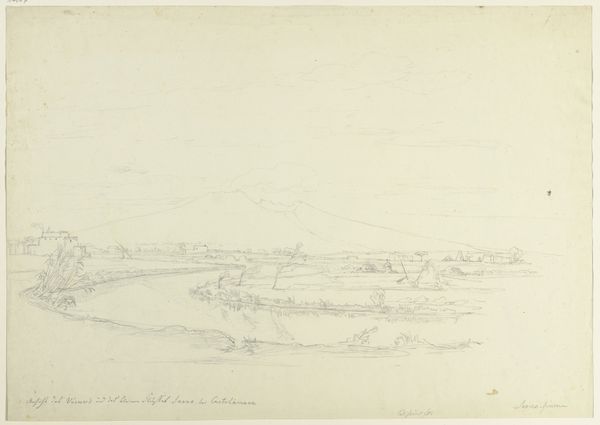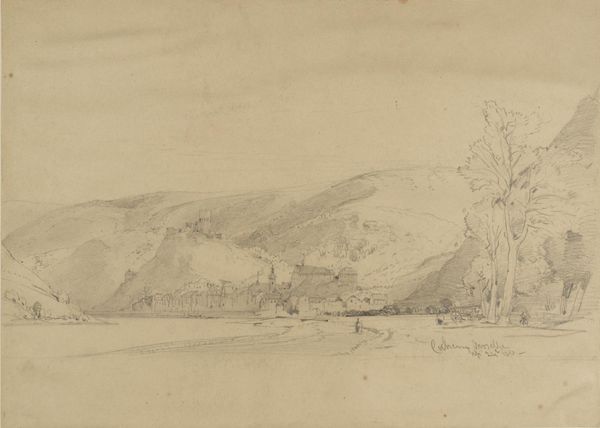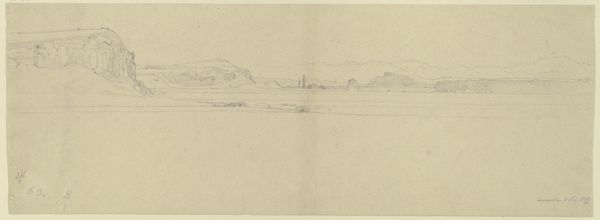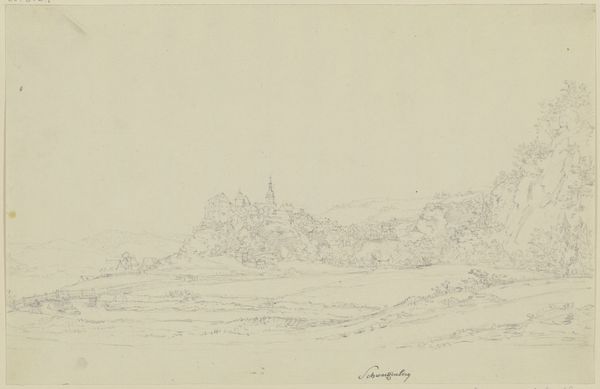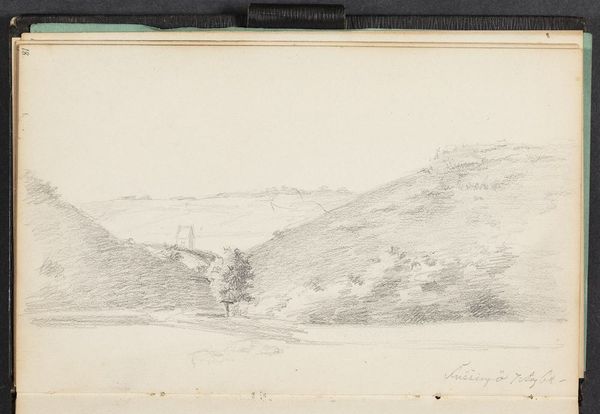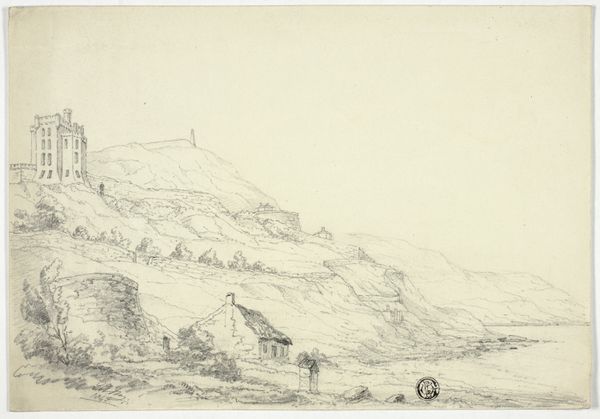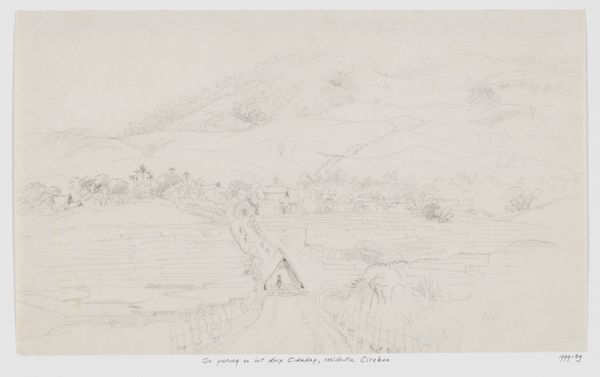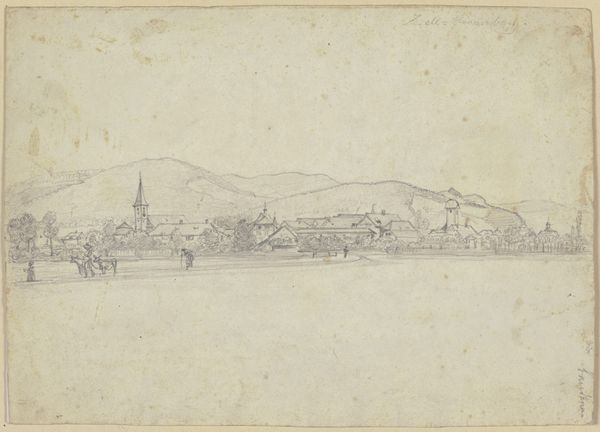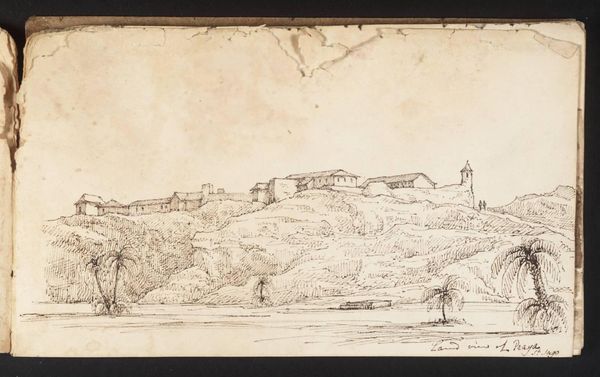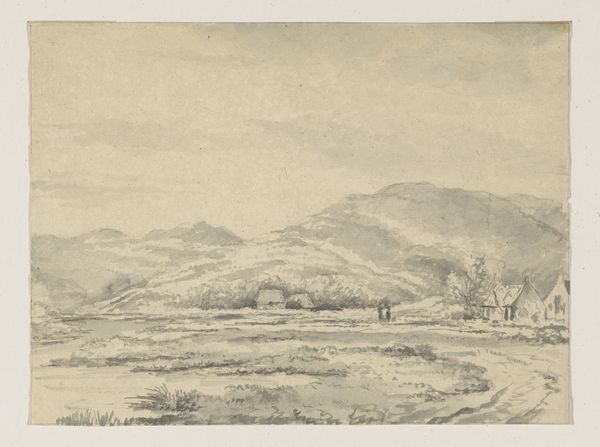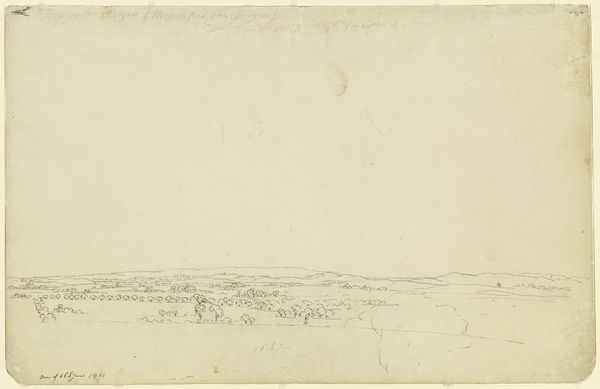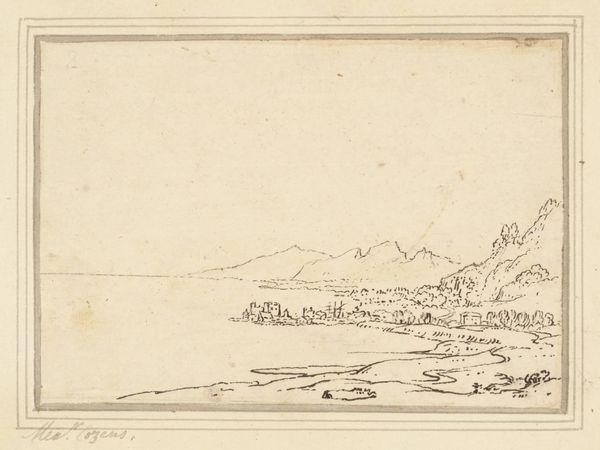
drawing, intaglio, paper, pencil, graphite
#
drawing
#
intaglio
#
greek-and-roman-art
#
landscape
#
paper
#
romanticism
#
pencil
#
graphite
Copyright: Public Domain
Editor: This is Carl Rottmann’s "Epidaurus," made with graphite and pencil on paper in 1834. There’s a really tranquil, almost hazy quality to this landscape drawing. What do you see in it? Curator: The first thing that strikes me is the interplay of line and tone. Rottmann's use of graphite allows for subtle gradations, building form and space primarily through variations in value, creating an atmosphere of receding distance. The composition also invites scrutiny. Note the placement of the landmass, and the tonal progression moving away from it. Editor: I see how the details become fainter the further back they are. Why choose such a restricted palette of grayscale tones? Curator: The choice might stem from a commitment to rendering light and shadow in their purest form, isolating those elements. This restriction can also act as a focusing agent. With fewer distractions of colour, the viewer is impelled to parse the forms presented, almost forcing us into the artwork's internal architecture, its composition. The line weights also change, depending on the subject’s distance from the viewer. What do you think this adds to the landscape itself? Editor: I guess it directs my focus to specific elements within the scene and accentuates the idea of depth and scale in the landscape. Curator: Precisely. Rottmann presents not just a depiction of place, but a considered, formal exploration of rendering depth, volume, and texture through strictly grayscale mediums. Editor: I hadn't considered how the limitations in colour enhance the other formal aspects so strongly. Curator: Absolutely, understanding formal structure really reframes one’s appreciation.
Comments
No comments
Be the first to comment and join the conversation on the ultimate creative platform.

